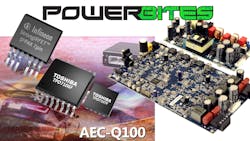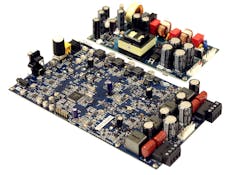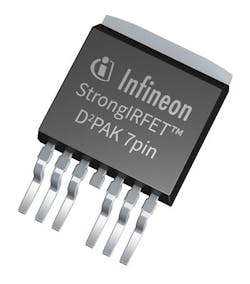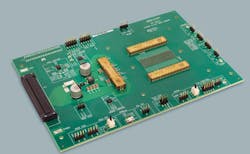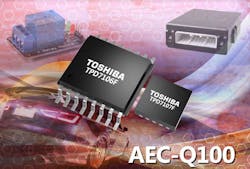This Week in PowerBites: High-Power PCB Design Secrets, GaN Audio
>> Electronic Design Resources
.. >> Library: Article Series
.. .. >> Topic: Power Management
.. .. .. >> Article Series: PowerBites
Experience GaN-Powered Audio with a 200-W/Channel Class-D Amp Eval Kit
GaN Systems is now offering an amplifier evaluation kit for high-sound-quality Class-D audio systems. The kit includes a 2-channel, 200-W per channel (8 Ω), Class-D audio amplifier and companion 400-W, continuous power audio-grade switched-mode power supply (SMPS). This solution highlights an easy plug-and-play design with features such as multi-audio signal inputs, bridge-tied load output, and open-loop/closed-loop toggling. With GaN, the design is very efficient and operates without heatsinks. These qualities allow audio design engineers to create premium audio products including smart speakers, automotive audio, and high-end home audio systems with a shorter time-to-market and at an affordable price.
Evaluation kit performance highlights include:
- 200-W/channel (8 Ω), 300-W/channel (4 Ω) amplifier with 96% efficiency
- 400-W continuous, 550-W peak companion SMPS
- < 0.01% THD+N (8 Ω, 1 W, 20 Hz to 20 kHz)
- ±0.5-dB frequency response to 50 kHz
- High efficiency and no heatsinks
- Good EMI/EMC performance due to reduced ringing/noise
GaN Systems also published a new white paper, “See, Feel, and Hear the Difference with GaN Class-D Amplifier and Companion SMPS,” which discusses the company’s audio evaluation kit's performance, as measured by a standard set of industry performance and validation tests. For more information about this evaluation kit, or to purchase it, visit www.gansystems.com, or contact a local sales representative.
Power FETs for Battery-Powered Apps Offer Low RDS(on) + Advanced Packaging
Infineon Technologies has targeted battery-powered applications with three new additions to its StrongIRFET 40- to 60-V MOSFET product family. Housed in a compact D²PAK, 7-pin+ package, the MOSFETs offer up to 13% lower RDS(on) and up to 50% higher current-carrying capability than previous-generation devices. For example, the IRL40SC240 is a 40-V device with an RDS(on) of 0.65 mΩ and current-carrying capability of 360 A.
The new D²PAK 7pin+ package can hold a die that's up to 20% larger than a standard package, while occupying the same footprint and pinout. Their efficiency and compact form factor makes them well-suited for battery-powered applications, including battery-powered tools, battery-management systems, and low-voltage drives.
The StrongIRFET in the D²PAK 7pin+ package is available now. More information, including links to datasheet and pricing information, can be found by clicking here.
Learn the Secrets of PCB Design for High-Performance Power Delivery—A Webinar
PCB layout is critical for removing heat and delivering power. This technical webinar, presented by Vicor, will cover important aspects of PCB design for maximizing heat transfer while minimizing power-delivery impedance and losses.
You’re invited to join this free webinar, held Wednesday, June 10, at 2 pm ET, where you will learn about:
- Applying thermal models and simulation
- PCB layout for effective thermal management
- Power/signal routing and integrity in high-density, high-current applications to minimize board losses and maximize performance
Register by clicking here.
Will Growing Levels of Analog Functions in SoCs Affect Power Requirements of Tomorrow's Products?
Brian Bailey, analog EDA guru and Technology Editor/EDA for Semiconductor Engineering, believes it will. Although primarily aimed at the EDA community, his latest blog, titled “Low-Power Analog,” should serve as a heads-up to the power community: We may not be able to count on Moore's Law when we anticipate the power requirements of mixed-signal devices fabricated on the next process geometry. Brian puts it this way:
Analog circuitry is usually a small part of a large SoC, but it does not scale in the same way as digital circuitry under Moore’s Law. The power consumed by analog is becoming an increasing concern, especially for battery-operated devices. At the same time, little automation is available to help analog designers reduce consumption.
“Newer consumer devices, like smartphones and wearables, along with IoT nodes, are resulting in an increasing number of sensors being built into these devices,” says Björn Zeugmann, member of the Integrated Sensor Electronics research group at Fraunhofer IIS’ Engineering of Adaptive Systems Division. “These devices also need to be very low power, and thus there is growing importance for power optimization within analog circuits.”
To read further, visit https://semiengineering.com/low-power-analog/.
Advanced Power Solutions for Extreme-Performance GPU/CPU/XPU AI Accelerator Cards
Vicor Corp. announced a ChiP-set for supplying power to high-performance GPU, CPU, and ASIC (“XPU”) processors directly from a 48-V supply bus. A driver, MCD4609, and a pair of MCM4609 current multiplier modules can supply up to 650 A continuous and 1,200 A peak. Owing to their small footprint and low profile (45.7 × 8.6 × 3.2 mm), the current multipliers can be placed close to the processor, enabling reduced power-distribution-network (PDN) losses and higher power system efficiency.
The 4609 ChiP-set adds to Vicor’s Power-on-Package portfolio of Lateral Power Delivery (LPD) solutions, which deliver current from power converters vertically stacked under a processor through a capacitor network geared to a processor-specific pin-map. A GCM (“Gearbox Current Multiplier”) is a specialized VPD embodiment incorporating a gearbox capacitor network as a layer in the vertical stack. By supplying current directly under the processor and eliminating PDN losses, GCMs will soon facilitate current densities reaching up to 2 A/mm2.
The 4609 ChiP-set is in mass production and available to new customers on the Vicor Hydra II evaluation board. To learn more about Vicor's Lateral Power Delivery and Vertical Power Delivery system, click here.
Smart MOSFET Gate Drivers Provide Fault Sensing, Protection for ECUs and Other Automotive Power Apps
Toshiba's TPD7106F and TPD7107F are AEC-Q100-compliant smart gate-driver switches that were designed for automotive power-control applications, including controlling the current delivered to electronic control units (ECUs), junction boxes, and body-control modules.
Dubbed "intelligent power devices (IPDs)" by Toshiba, the gate-driver devices incorporate an array of self-protection functions and built-in diagnostic capabilities that sense voltage abnormalities, overcurrent, overtemperature, reversed power connections, floating ground pin, and short to VDD. Should abnormal operation occur, they can rapidly and autonomously turn off the MOSFET to reduce the load current flowing through it while alerting the local microcontroller to the fault condition. The IPDs are also suited for use in power-distribution modules and semiconductor relays.
When combined with Toshiba’s low on-resistance N-channel automotive MOSFETs, such as the TPHR7904PB or TPH1R104PB, the TPD7106/107F IPDs can serve as high-side switches to control load current. They include an integrated voltage-boosting circuit that can reduce BOM costs and component count. The TPD7106F comes in a compact, 16-pin SSOP package, while the TPD7107F is housed in a WSON10A package Both operate over wide temperature ranges, with the TPD7107F supporting −40 to +125°C and the TPD7106F covering −40 to +150°C. For more information, click here for the TPD7106F or click here for the TPD7107F.
